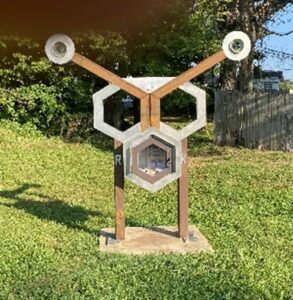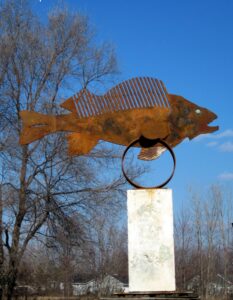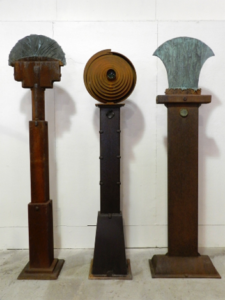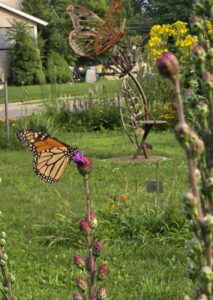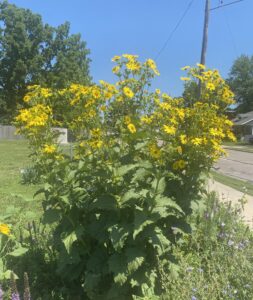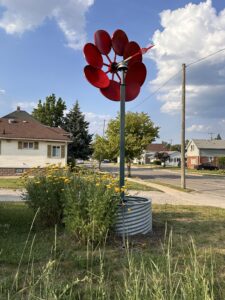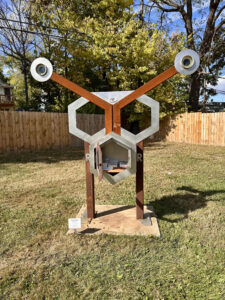
By Israel & Erik Nordin
West side of NB Gratiot between Clinton River Dr. & Kibbee St.
The Bee Reader sculpture at the evolving MCEP Pollinator Park was installed in July of 2024. It will be open to extend gifts of small paperback books for young readers and mature readers. Each month the Bee Reader will have two paperback books available. One geared for younger readers and one for mature readers. Please come and check it out. Each month’s selection will be available on the MCEP website with the book’s description. If for some reason the books are not there just call us on 586 783 6008 and we will replenish the stock.
Our Bee Reader selections for November are:
All About the Presidents Search-a-Word Puzzles
Learn about Adams’ pet alligator, Taft’s nickname, and more! Fun facts about 41 different presidents are the clues to these hidden-word puzzles. Names of family members, hobbies, pets, and other related terms appear within each puzzle — backward, forward, diagonally, vertically, and horizontally — and in a separate list of clues. Kids will have hours of presidential amusement! Solutions are included.
Creative Haven Celebrate! Day of the Dead Coloring Book
By David Edgerly and Chris Edgerly
Lift your “spirits” with this colorful celebration of the Mexican holiday in which families remember and honor their deceased loved ones. Created by David and Chris Edgerly, 31 elaborately detailed designs include iconic sugar skulls as well as dozens of whimsical skeletons, an important symbol of the festive event, in a variety of playful poses. Pages are perforated and printed on one side only for easy removal and display. Specially designed for experienced colorists, Celebrate! Day of the Dead and other Creative Haven® adult coloring books offer an escape to a world of inspiration and artistic fulfillment. Each title is also an effective and fun-filled way to relax and reduce stress.
Be sure to Like us on Facebook!
We hope you will enjoy this month’s selections!

